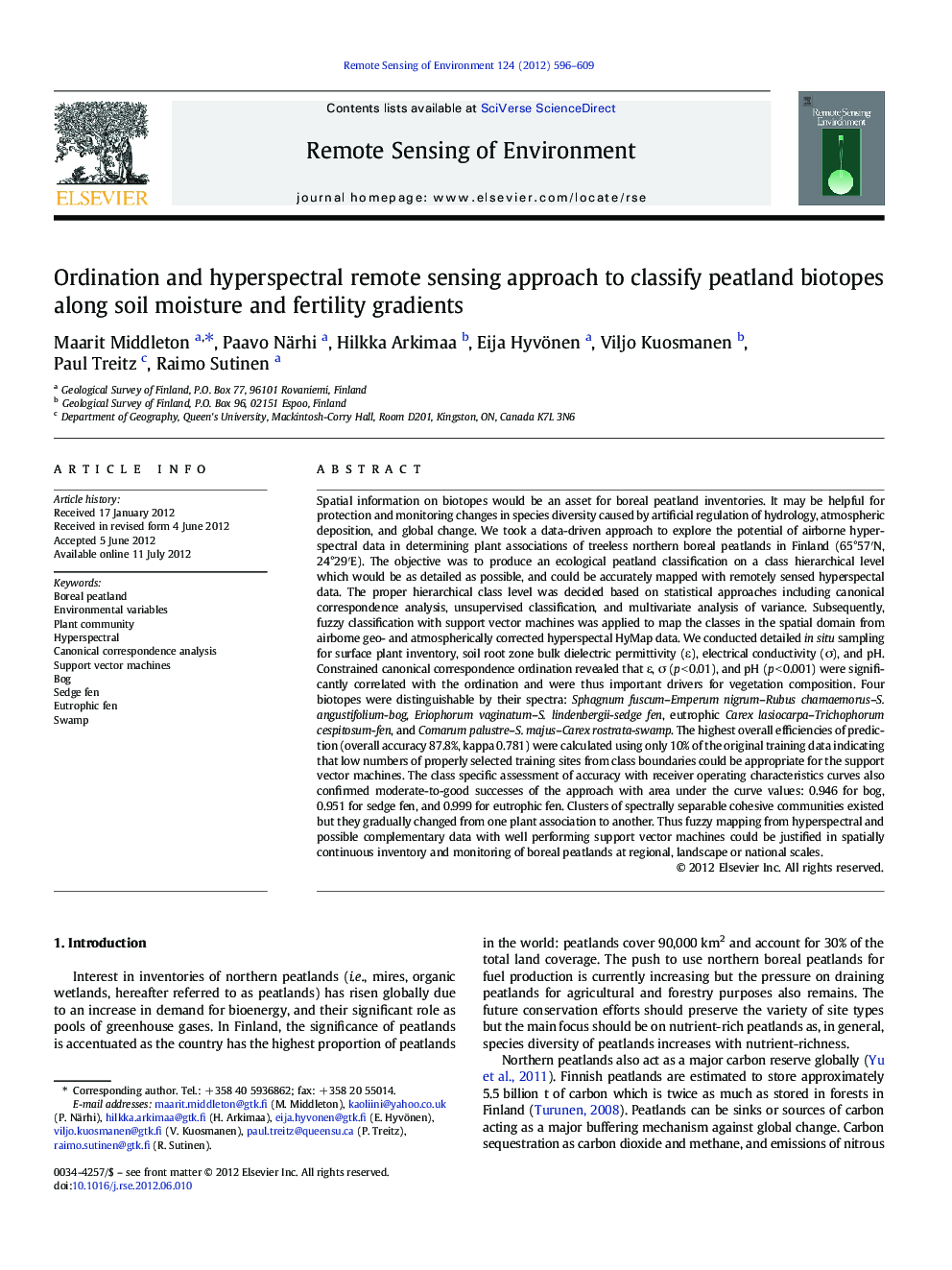| کد مقاله | کد نشریه | سال انتشار | مقاله انگلیسی | نسخه تمام متن |
|---|---|---|---|---|
| 4459032 | 1621276 | 2012 | 14 صفحه PDF | دانلود رایگان |

Spatial information on biotopes would be an asset for boreal peatland inventories. It may be helpful for protection and monitoring changes in species diversity caused by artificial regulation of hydrology, atmospheric deposition, and global change. We took a data-driven approach to explore the potential of airborne hyperspectral data in determining plant associations of treeless northern boreal peatlands in Finland (65°57′N, 24°29′E). The objective was to produce an ecological peatland classification on a class hierarchical level which would be as detailed as possible, and could be accurately mapped with remotely sensed hyperspectal data. The proper hierarchical class level was decided based on statistical approaches including canonical correspondence analysis, unsupervised classification, and multivariate analysis of variance. Subsequently, fuzzy classification with support vector machines was applied to map the classes in the spatial domain from airborne geo- and atmospherically corrected hyperspectal HyMap data. We conducted detailed in situ sampling for surface plant inventory, soil root zone bulk dielectric permittivity (ε), electrical conductivity (σ), and pH. Constrained canonical correspondence ordination revealed that ε, σ (p < 0.01), and pH (p < 0.001) were significantly correlated with the ordination and were thus important drivers for vegetation composition. Four biotopes were distinguishable by their spectra: Sphagnum fuscum–Emperum nigrum–Rubus chamaemorus–S. angustifolium-bog, Eriophorum vaginatum–S. lindenbergii-sedge fen, eutrophic Carex lasiocarpa–Trichophorum cespitosum-fen, and Comarum palustre–S. majus–Carex rostrata-swamp. The highest overall efficiencies of prediction (overall accuracy 87.8%, kappa 0.781) were calculated using only 10% of the original training data indicating that low numbers of properly selected training sites from class boundaries could be appropriate for the support vector machines. The class specific assessment of accuracy with receiver operating characteristics curves also confirmed moderate-to-good successes of the approach with area under the curve values: 0.946 for bog, 0.951 for sedge fen, and 0.999 for eutrophic fen. Clusters of spectrally separable cohesive communities existed but they gradually changed from one plant association to another. Thus fuzzy mapping from hyperspectral and possible complementary data with well performing support vector machines could be justified in spatially continuous inventory and monitoring of boreal peatlands at regional, landscape or national scales.
► We examine combining ordination and fuzzy mapping in classifying boreal peatlands.
► Ordination is constrained with soil dielectric permittivity, conductivity and pH.
► Bog, sedge fen, eutrophic fen and swamp are distinguishable by their spectra.
► Ordination analysis reveals an optimal number of peatland classes.
► Support vector machines classify hyperspectral data very successfully.
Journal: Remote Sensing of Environment - Volume 124, September 2012, Pages 596–609